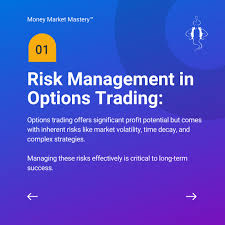Introduction
Understanding How to Read an Option Chain Like a Pro is essential for any trader looking to make informed investment decisions. An option chain provides crucial details about available call and put options, helping traders evaluate potential trades effectively. By mastering the option chain, investors can analyze strike prices, expiration dates, volume, and open interest to optimize their trading strategies.
What is an Option Chain?
How to Read an Option Chain Like a Pro begins with understanding what an option chain is. It is a comprehensive listing of all available option contracts for a specific stock or asset. An option chain includes important details such as:
- Strike Price – The price at which the option holder can buy or sell the asset.
- Bid and Ask Prices – The highest price a buyer is willing to pay and the lowest price a seller is willing to accept.
- Volume and Open Interest – Indicators of market activity and liquidity for each option contract.
- Implied Volatility – The market’s expectation of price fluctuation.
By analyzing these components, traders can make better decisions regarding entry and exit points.
Key Components of an Option Chain
To truly master How to Read an Option Chain Like a Pro, traders must familiarize themselves with its key components:
- Call and Put Options – Calls give the right to buy, while puts provide the right to sell at a set price.
- Strike Prices – The range of prices at which options can be exercised.
- Expiration Dates – The timeframe within which the option must be exercised.
- The Greeks – Delta, Theta, Gamma, Vega, and Rho help measure various risks and price movements.
- Intrinsic and Extrinsic Value – Helps traders assess an option’s true worth.
These elements guide traders in making informed and strategic investment choices.
How to Analyze an Option Chain Like a Pro
A crucial aspect of How to Read an Option Chain Like a Pro is learning how to analyze the data efficiently. Here are some essential tips:
- Look at Open Interest and Volume – High numbers indicate strong liquidity and active trading.
- Examine Implied Volatility – Higher volatility can mean greater price swings, affecting the option’s premium.
- Compare Bid-Ask Spreads – Narrow spreads indicate a more liquid market, while wider spreads can increase trading costs.
- Analyze Strike Price Levels – In-the-money, at-the-money, and out-of-the-money options impact potential profitability.
By following these steps, traders can better assess opportunities and risks before executing trades.
Common Mistakes When Reading an Option Chain
Even seasoned traders can make mistakes when analyzing an option chain. How to Read an Option Chain Like a Pro highlights some common errors to avoid:
- Ignoring Open Interest and Volume – Low activity can lead to difficulty in executing trades.
- Misinterpreting Implied Volatility – Not considering volatility can result in unexpected price swings.
- Neglecting Expiration Dates – Short-term options decay faster than long-term options, affecting profitability.
Being aware of these pitfalls can help traders make smarter trading decisions.
Mastering the Art of Reading an Option Chain
Introduction
Understanding Mastering the Art of Reading an Option Chain is essential for any trader looking to make informed investment decisions. An option chain provides crucial details about available call and put options, helping traders evaluate potential trades effectively. By mastering the option chain, investors can analyze strike prices, expiration dates, volume, and open interest to optimize their trading strategies.
What is an Option Chain?
Mastering the Art of Reading an Option Chain begins with understanding what an option chain is. It is a comprehensive listing of all available option contracts for a specific stock or asset. An option chain includes important details such as:
- Strike Price – The price at which the option holder can buy or sell the asset.
- Bid and Ask Prices – The highest price a buyer is willing to pay and the lowest price a seller is willing to accept.
- Volume and Open Interest – Indicators of market activity and liquidity for each option contract.
- Implied Volatility – The market’s expectation of price fluctuation.
By analyzing these components, traders can make better decisions regarding entry and exit points.
Key Components of an Option Chain
To truly master Mastering the Art of Reading an Option Chain, traders must familiarize themselves with its key components:
- Call and Put Options – Calls give the right to buy, while puts provide the right to sell at a set price.
- Strike Prices – The range of prices at which options can be exercised.
- Expiration Dates – The timeframe within which the option must be exercised.
- The Greeks – Delta, Theta, Gamma, Vega, and Rho help measure various risks and price movements.
- Intrinsic and Extrinsic Value – Helps traders assess an option’s true worth.
These elements guide traders in making informed and strategic investment choices.
How to Analyze an Option Chain Effectively
A crucial aspect of Mastering the Art of Reading an Option Chain is learning how to analyze the data efficiently. Here are some essential tips:
- Look at Open Interest and Volume – High numbers indicate strong liquidity and active trading.
- Examine Implied Volatility – Higher volatility can mean greater price swings, affecting the option’s premium.
- Compare Bid-Ask Spreads – Narrow spreads indicate a more liquid market, while wider spreads can increase trading costs.
- Analyze Strike Price Levels – In-the-money, at-the-money, and out-of-the-money options impact potential profitability.
By following these steps, traders can better assess opportunities and risks before executing trades.
Common Mistakes When Reading an Option Chain
Even seasoned traders can make mistakes when analyzing an option chain. Mastering the Art of Reading an Option Chain highlights some common errors to avoid:
- Ignoring Open Interest and Volume – Low activity can lead to difficulty in executing trades.
- Misinterpreting Implied Volatility – Not considering volatility can result in unexpected price swings.
- Neglecting Expiration Dates – Short-term options decay faster than long-term options, affecting profitability.
Being aware of these pitfalls can help traders make smarter trading decisions.




